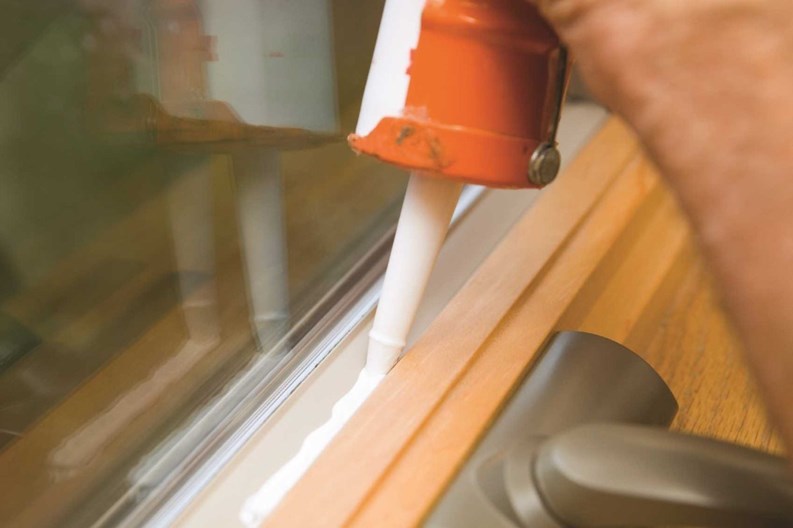As summer thunderstorms buffet condo properties throughout New England, less-than weather-tight windows, doors, and roofs may begin to make themselves known. And though condo boards never enjoy addressing the perennial problem of weatherproofing, now is the time to consider the matter—before the cold winds of winter blow.
“In older buildings, I think people are much more expecting to find issues of what I call lack of modern buildings methods,” says Jack Carr, P.E., RS, LEED-AP, senior vice president of Criterium Engineers, based in Portland, Maine. “I think the more interesting situations are newer buildings where you find these problems.” It’s not unusual, say experts, to find building envelope issues in properties that are less than five years old. “Often the first issue is water infiltration—some water is getting into the cavity and wetting the inside,” says Carr. “So the investigations of buildings focusing on water infiltration are key.”
“Slowly but surely, the condo industry is accepting the fact that you can’t talk about a separate roofing project, a separate siding project, a separate window and door project. You have to talk about integrating these projects together,” notes Ralph Noblin, P.E. As president of Noblin & Associates, a consulting engineering firm based in both Bridgewater, Massachusetts, and Dover, New Hampshire. Noblin says he’s often seen condo boards who misunderstand the integrated nature of the various structural elements. “It’s not a siding discussion; it’s not a window discussion; it’s not a skylight discussion. And I tell them it has to be a discussion about all those things, because that is the building envelope.”
From the Top Down
A condominium’s building envelope begins at the ridge of the roof and extends downward to the foundation, physically progressing under the building and around it—“like a big rubber band surrounding the building,” says Carr. “Things usually start at the roof or the attic. The attic is key to many of the issues inside a building,” he notes. “When we put things in terms of priorities, we always discuss that it’s best to address the attic first.”
Proper insulation of the attic is key to energy efficiency and overall building health, say the experts. But often times, correct installation methods are misunderstood. Proper installation should include insulation placed beneath the attic’s floor, not above its ceiling. The latter method—a common mistake in amateur construction—serves only to trap heat inside the attic, leading to rooftop wear and premature roofing failure.
“The other important benefit of a well-insulated attic—assuming it’s properly ventilated—is to avoid ice dams, which are the bane of condominiums. You talk to any property manager, and the first thing they’ll complain about in any winter is ice damming,” says Carr, “because that creates all kinds of leaks and damage and conflicts between unit owners—all kinds of problems.”
Among those problems is multi-unit water damage, as condo insurers like Bernie Gitlin know well. Gitlin, executive vice president of Risk Strategies Company in metro Boston, Massachusetts, is a decades-long veteran of condo insurance who has often seen the problems that occur in the wake of such ice dam-related damage. “One of the things that causes ice dams is that they may not have the proper insulation in the attic, so that heat drifts into the attic when it’s not supposed to be there. And then you’ve got the melting and freezing effect of the ice that’s formed on the roof.”
Going hand-in-hand with insulation, say experts, is proper ventilation of the attic space. “People don’t realize how important that is,” observes Carr. “You want those attics to be cold. I’ve seen people stuff up their soffit vents with insulation—trying to keep air from escaping, thinking they’re trying to save heat in the building. When heat gets into that attic, you want to get rid of it as quickly as possible to avoid ice dams. Not only that, but heat in an attic will reduce the life of an asphalt-shingled roof by 50 percent.”
In fact, say experts, ventilation is a key factor in nearly all areas of condo construction—including often-overlooked basement and wall cavities. “The biggest thing you have to remember about new construction is that walls don’t breathe anymore,” says Noblin. “If someone says they do, they’re lying.”
Moisture is the Enemy
“In the old days—like when you built Victorians, a hundred years ago—they never had rot in the walls because they were drafty. They had plenty of ventilation,” Carr notes. “But what happened, as we’ve moved toward more energy consciousness in the construction industry, the buildings have become more and more tight. Rather than stuffing bad insulation in the cavity walls, we’re now spraying it with foam. And it’s like putting a big layer of Saran Wrap around the entire building.”
Despite the “over tightening” concerns that some associations face today, there was a time, not too many years ago, says Noblin, when casual attitudes toward the building envelope led to surprising levels of carelessness. “When you got into the ’70s and ’80s, there was this very unrealistic attitude that you really didn’t need [building wrap], and a lot of developers didn’t put anything.” The purpose of building wrap is to fully seal the building from the possibility of water penetration. “That means you not only have to put the wrap on properly, but you have to put it on in a sequence that is shingled,” says Carr. “What you’ll often discover when you start doing invasive inspections is that the siding is not the problem.”
Despite its appearance as an external weather barrier, experts say even the most modern siding materials were not designed as complete protection against moisture. “If you look at vinyl siding, underneath the vinyl clapboard, there are always holes,” Carr observes. “It’s for drainage, because they know that water is going to get through that vinyl clapboard. And the only thing stopping water from getting into the house is not the vinyl clapboard, but the building wrap.”
With building wrap as the most important aspect of any condo’s building envelope, proper installation of this crucial barrier must be considered priority one in any condo remodel—a tricky proposition when one considers the unique challenges associations often face with door and window replacement. Often, condominium bylaws are written in such as way as to stipulate that the window belongs to the unit owner, but the structure or frame around the window belongs to the association. “Most failures of windows are because they did not properly flash the windows,” says Carr. “And historically, in my experience, flashing failures are the responsibility of the association, because it’s considered part of the frame.
“Now what happens often, when there is a façade repair, the question often comes up: Should we replace the windows? At this point,” Carr notes, “the association will now have their joint meeting with the unit owners and say listen, we’re putting on new siding and we think now may be the best time to replace all the windows.”
“It’s a lively discussion, and it’s not what they want to hear,” says Noblin. “There’s nothing more expensive than spending a ton of money and only doing the project half-way and continuing to have leaks and then to do it right having to undo some of the brand new work you just did. And that happens all the time when windows or doors are brought up.”
Despite the unique ownership issues that window replacement creates, Carr says there’s good reason for management to take the lead role in every aspect of any window replacement job—no matter the size. “They’re going to be taking responsibility for those windows if they leak, so they want to have control of over the quality of the installation of those windows. They want the windows to be uniform, and they want them to be done properly—not just installed by any contractor who shows up on the site.”
Whether windows, roofing, or siding, when the time does come to discuss large scale updating, money worries often affect association decision making—a problem that may seem even more daunting in a down economy. “None of [the associations] have all the money they need. That’s a myth. We do reserve studies all the time,” says Noblin. “And, when we finally come up with what they should have, and we take a look at that they have, it’s funny but it’s not funny. In some cases, it’s literally off by a factor of ten.”
In the end, say the experts, talk about weatherproofing with your contractors and management team in a reasonable manner. Then have an open conversation with your residents at board meetings and remember to keep them informed with newsletter updates so that they can monitor the ongoing project.
“I think the key is to have a very adult, very mature conversation. And have it be an open conversation at numerous meetings, with newsletters and meetings and updates that can, and frankly should, take place over the course of a few years—not weeks or months,” says Noblin. “That’s a situation that has to be led by the trustees. And they have to take a very matter-of-fact, mature approach.”
Matthew Worley is a freelance writer and a frequent contributor to New England Condominium.







Leave a Comment